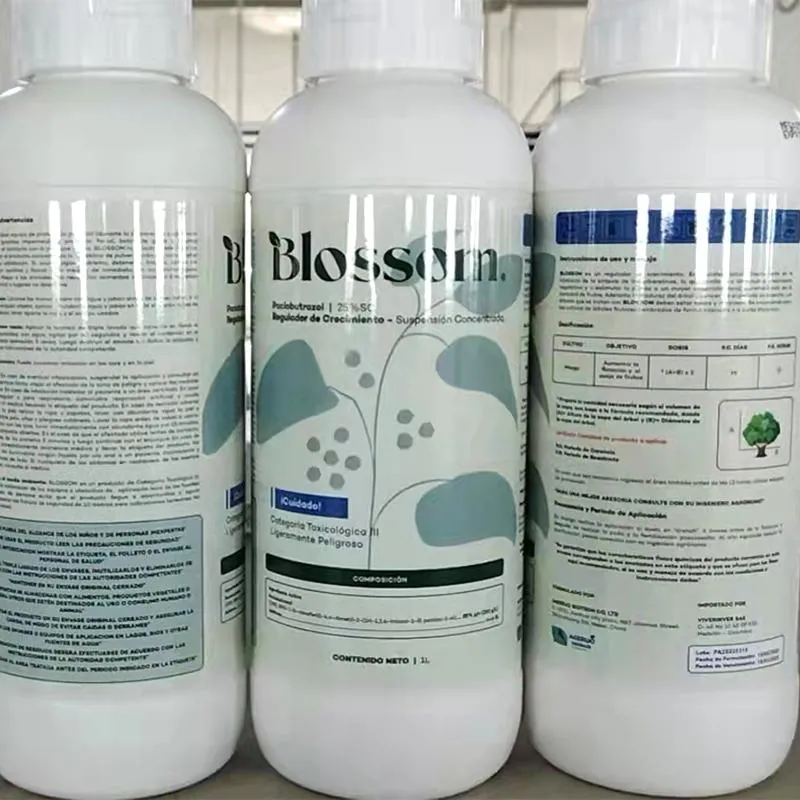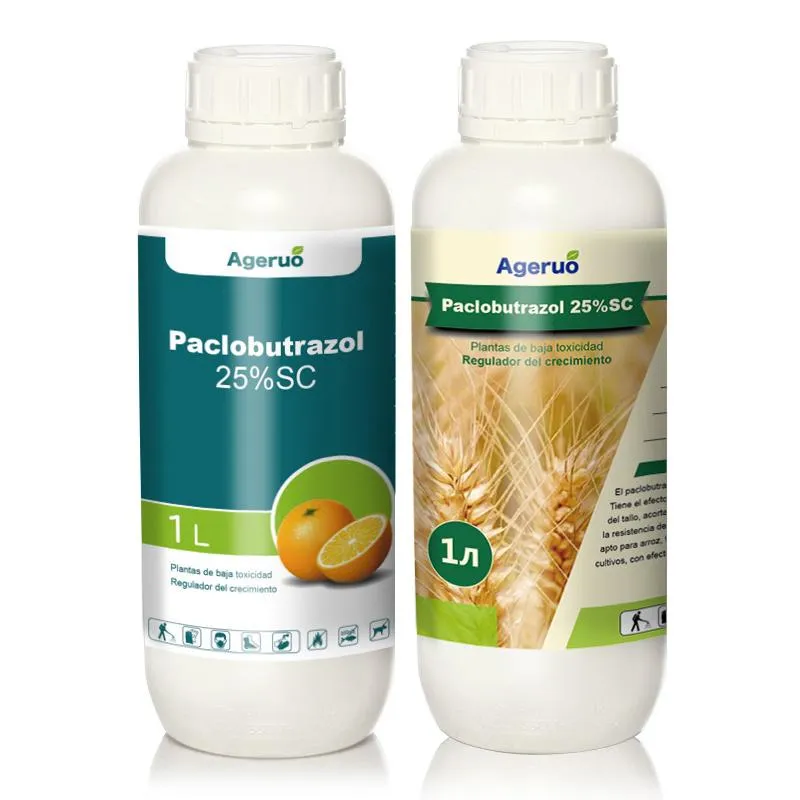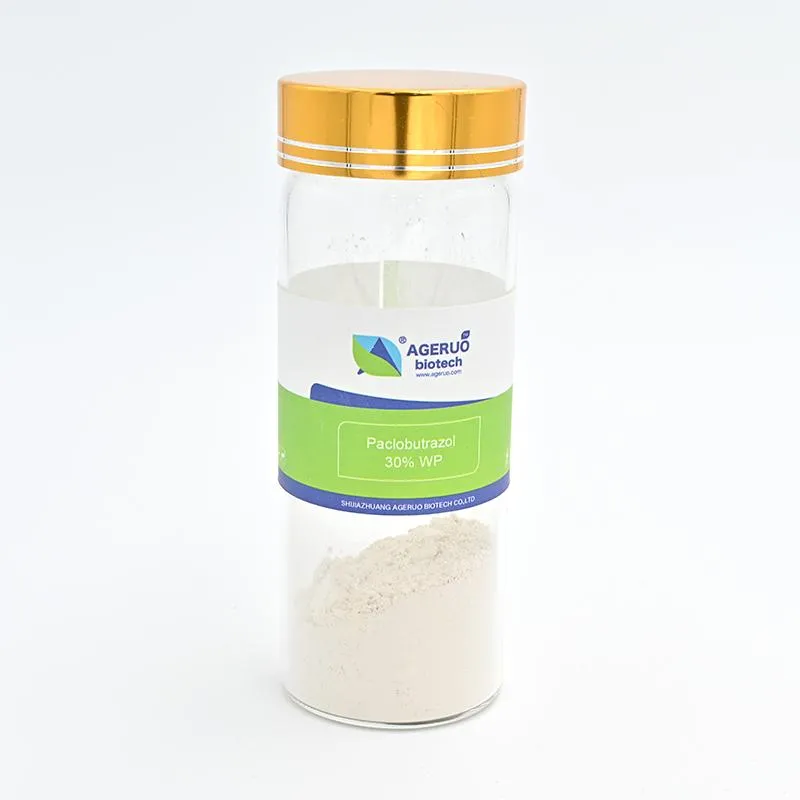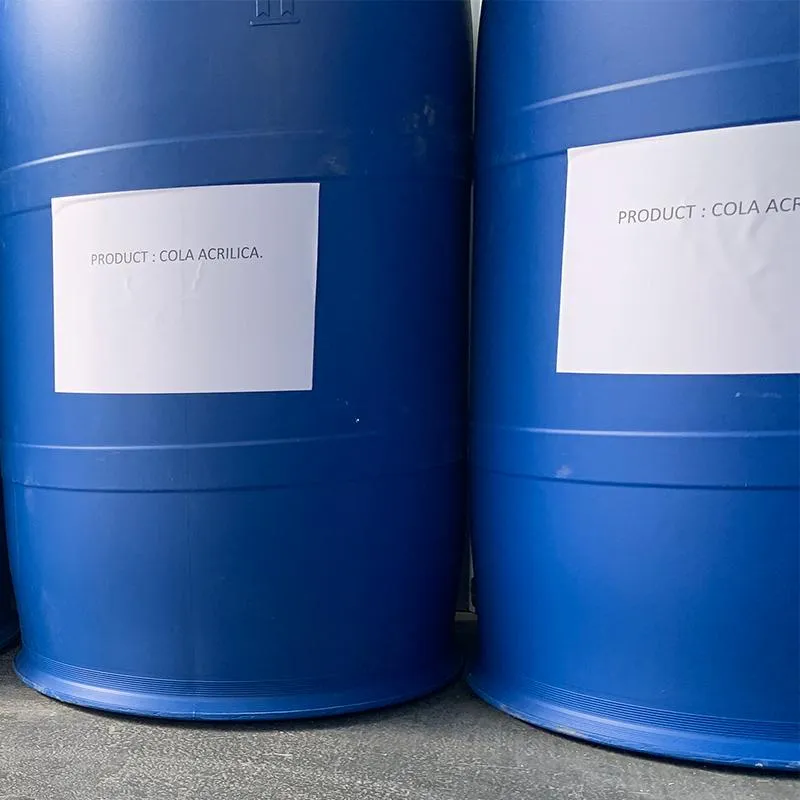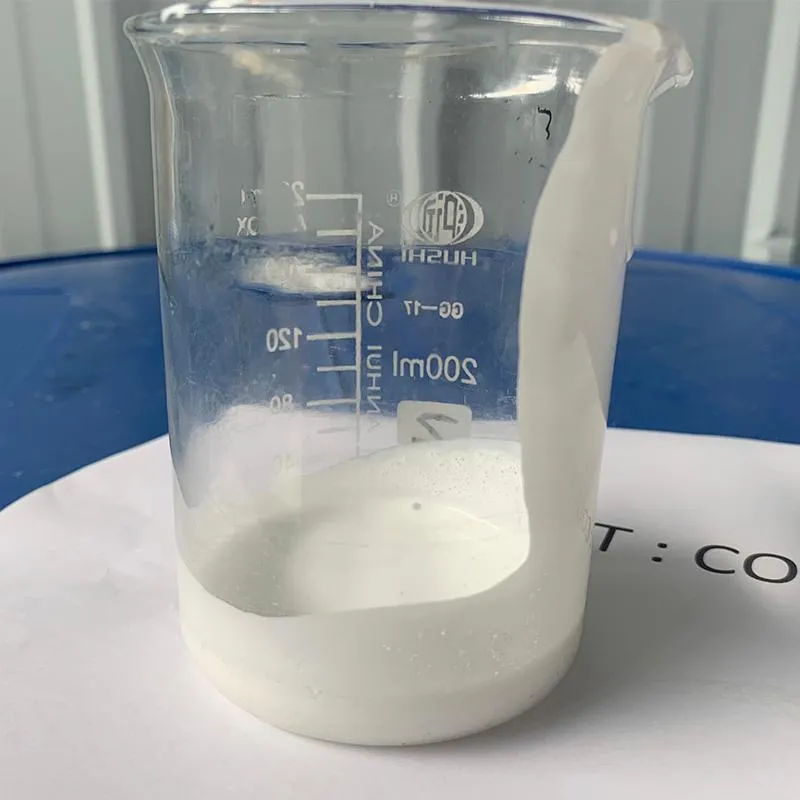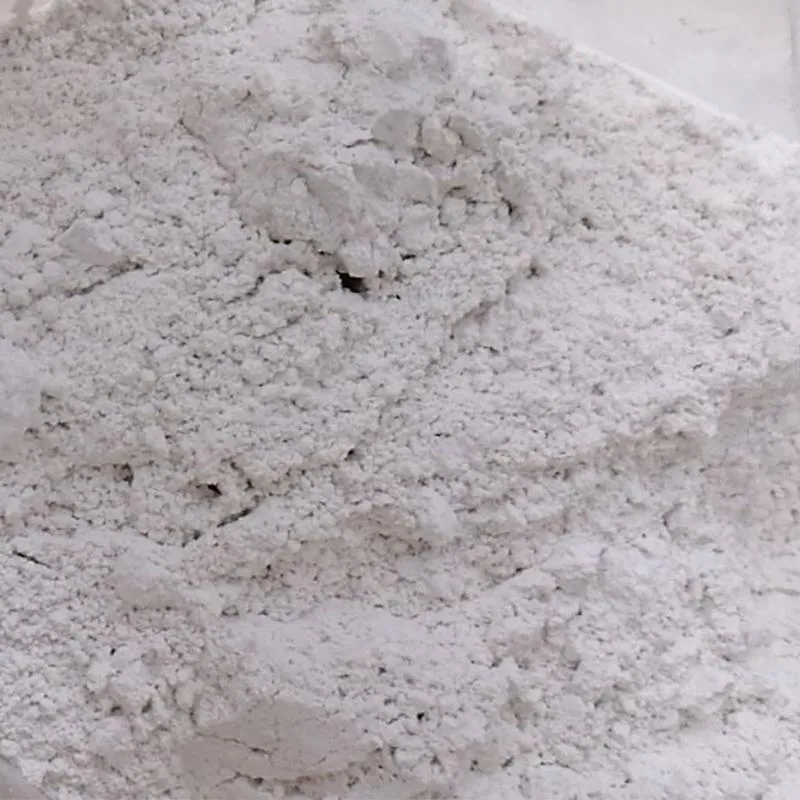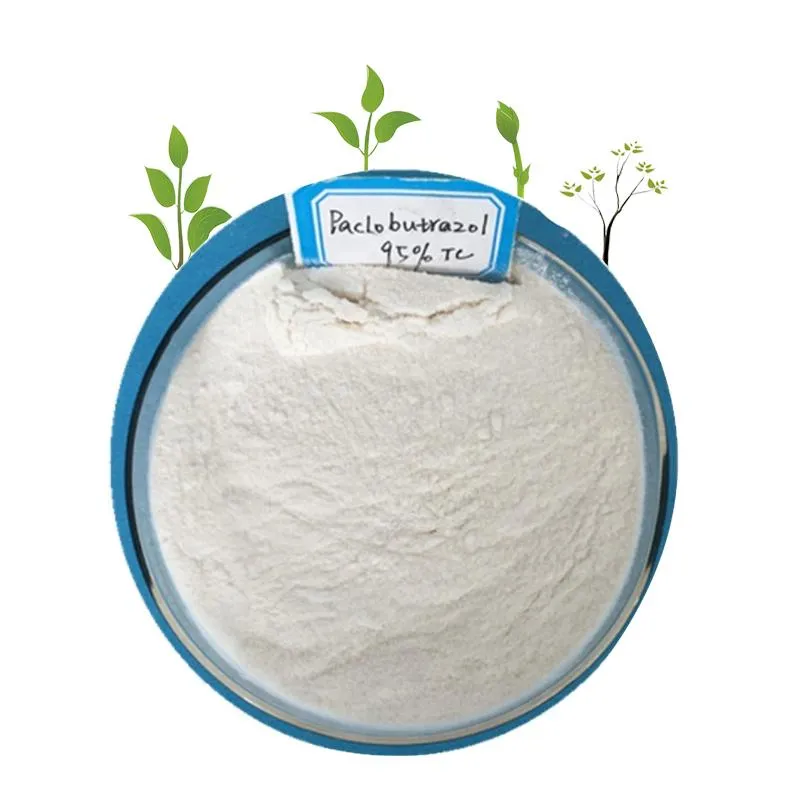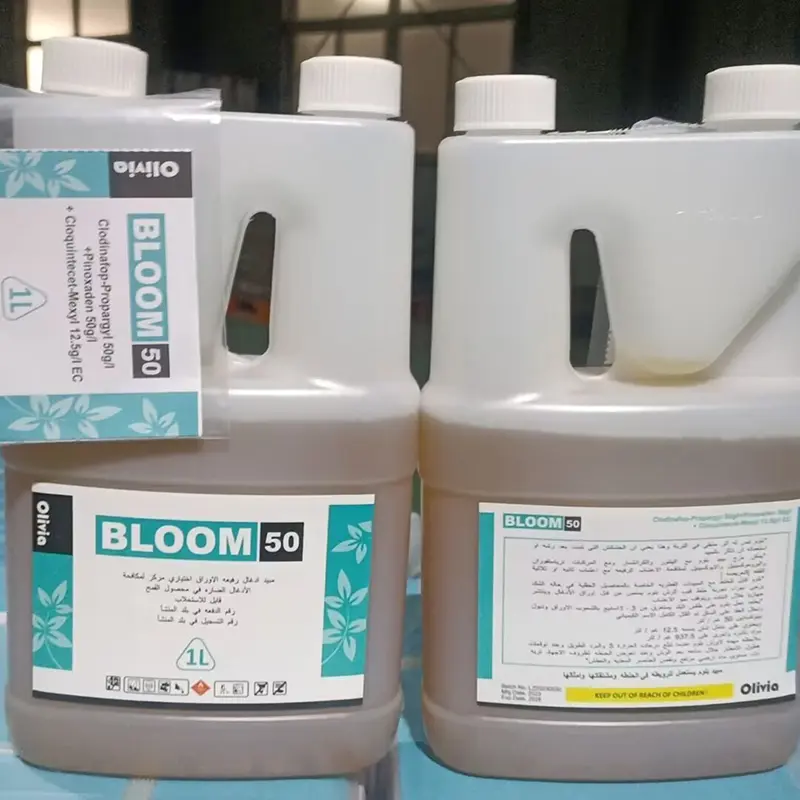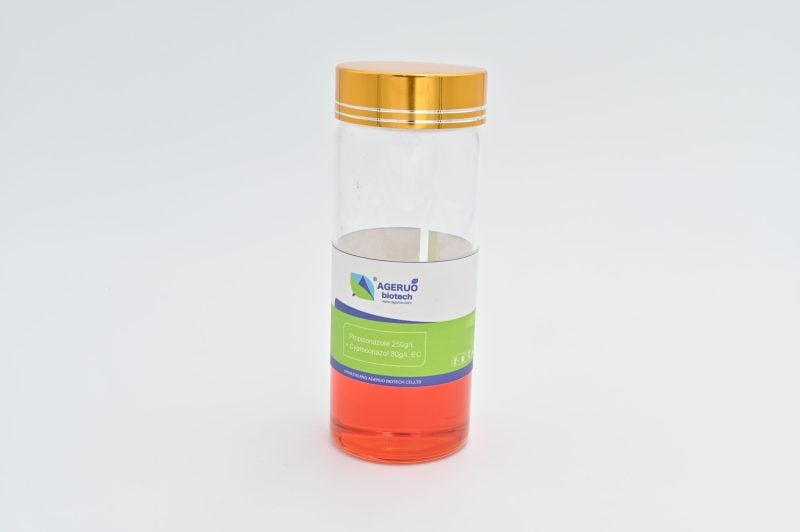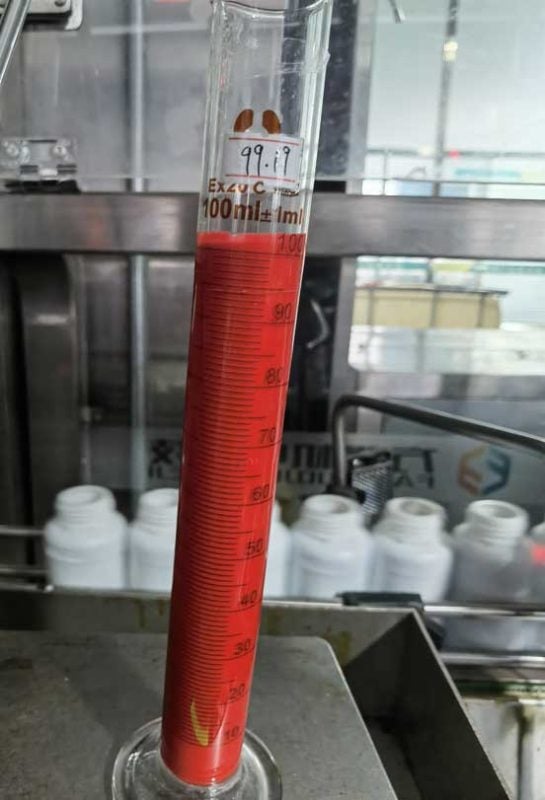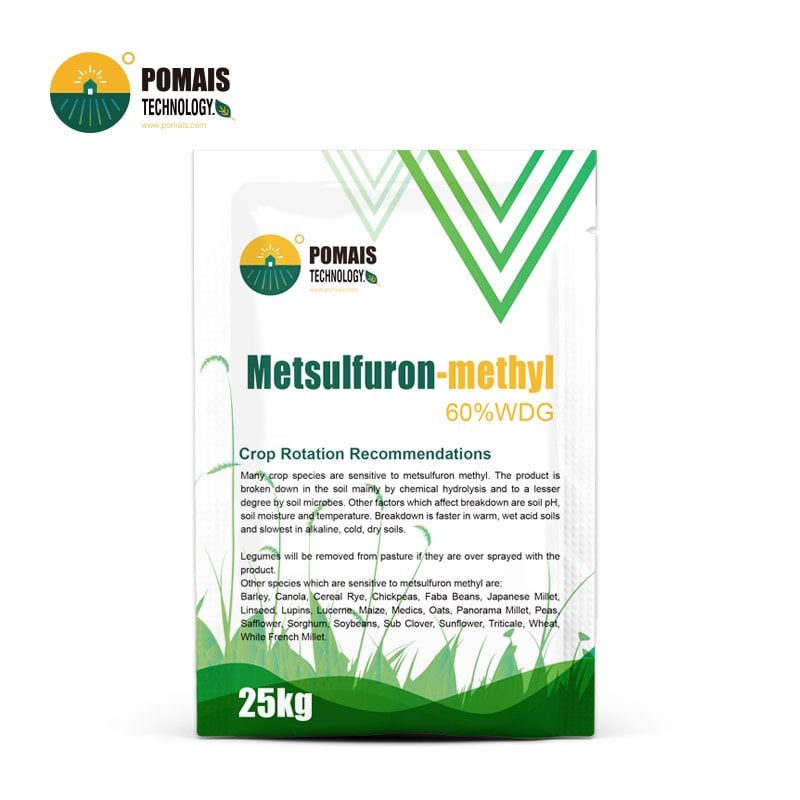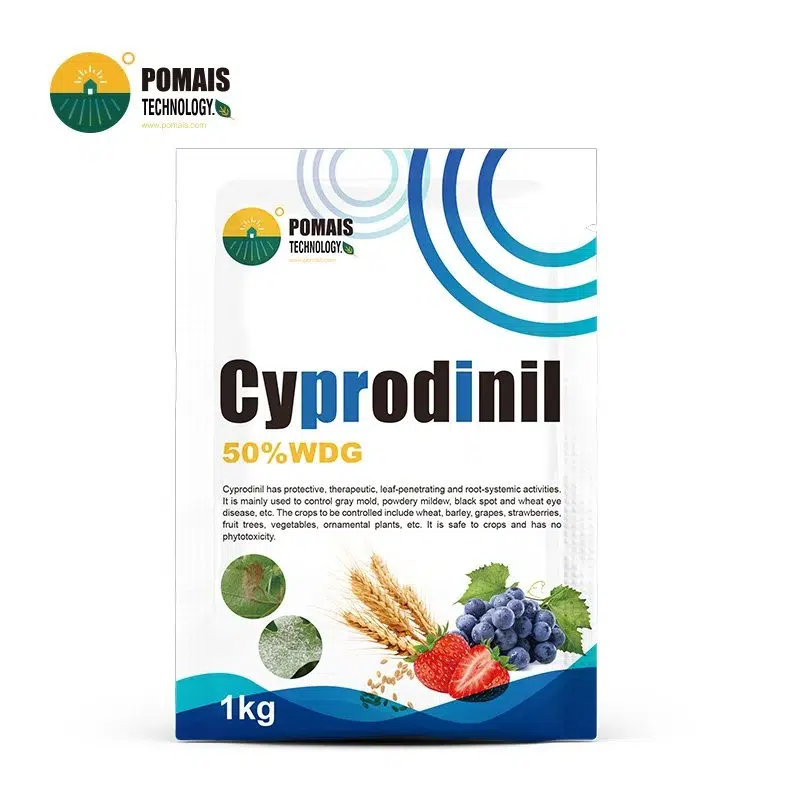Paclobutrazol 25% SC Plant Growth Regulator
Powerful Growth Regulator for Enhanced Crop Control
Paclobutrazol is a widely used plant growth regulator that effectively inhibits gibberellin biosynthesis, resulting in more compact, robust, and stress-resistant crops. With its systemic action through root and foliar uptake, this product is ideal for rice, wheat, peanuts, fruit trees, and other key agricultural crops. Available in multiple formulations (25% SC, 15% WP, 95% TC), it supports controlled plant height, uniform flowering, and improved yield.
POMAIS, a trusted agrochemical manufacturer from China, provides custom OEM packaging, full regulatory documentation, and fast global delivery. Suitable for commercial farming operations and distributors seeking consistent, high-performance plant growth solutions.
- Designed for Professional Buyers & Bulk Orders
- This product is available for business purchase and large-scale distribution.
- We support custom packaging, labeling, and formulation to meet your market needs.
- Let’s build your brand together.

About Paclobutrazol 25% SC Plant Growth Regulator
About Paclobutrazol 25% SC Plant Growth Regulator
| Product Name | Paclobutrazol |
| Available Formulations | 25% SC, 15% WP, 30% WP, 95% TC, mixed SC/WP combinations |
| Active Ingredient | Paclobutrazol – Triazole-based gibberellin inhibitor |
| CAS Number | 76738-62-0 |
| Mode of Action | Inhibits gibberellin biosynthesis via ent-kaurene oxidase pathway |
| Target Crops | Rice, Wheat, Peanuts, Rapeseed, Fruit Trees, Ornamentals, Turfgrass |
| Application Methods | Foliar spray, Soil drench, Root zone incorporation |
| Recommended Dosage | 15–40 mL/15 L (SC); 100–300 g/ha (WP); 1–2 L/ha for fertigation |
| Formulation Appearance | Liquid (SC), Powder (WP/TC) |
| Packaging Options | 100 mL–25 kg, HDPE bottles, foil bags, fiber drums |
| Rainfastness | Rainfast within 2–3 hours |
| Tank Mix Compatibility | Compatible with most fertilizers and pesticides (avoid strong acids/alkalis) |
| Shelf Life | 2 years (sealed containers at 5–35°C) |
| GHS Classification | H302, H319, H412 – Warning |
| POMAIS Services | OEM/ODM, private label, global registration support, fast logistics |
Paclobutrazol Plant Growth Regulator – Comprehensive Control for Modern Agriculture
Paclobutrazol (CAS No. 76738-62-0) is a highly effective plant growth regulator used to manage vegetative growth, improve stress tolerance, and enhance reproductive development in a wide range of field and horticultural crops. Classified as a triazole compound, it works by inhibiting the biosynthesis of gibberellins, leading to reduced stem elongation and more compact plant architecture.
This mode of action not only improves crop stability and lodging resistance but also redirects plant energy into flowering and fruiting, resulting in increased yield and quality. In crops like rice, wheat, peanuts, fruit trees, rapeseed, and mango, Paclobutrazol enhances tillering, strengthens stems, and ensures synchronized growth cycles.
POMAIS offers Paclobutrazol 25% SC, 15% WP, and 95% TC, along with customized blend formulations such as:
- Paclobutrazol 25% + Mepiquat Chloride 5% SC
- Paclobutrazol 6% + Chlormequat 24% SC
- Paclobutrazol 2.5% + Mepiquat Chloride 7.5% WP
These variations give distributors and large-scale growers flexible options for localized agronomic needs. Whether used in foliar spray or soil drench, Paclobutrazol ensures stronger roots, reduced vegetative overgrowth, and more uniform harvest timing.
As a professional agrochemical supplier, POMAIS provides:
- OEM/ODM services, including customized labels and packaging formats
- Regulatory support, including MSDS, COA, TDS, and global shipping documentation
- Quick production turnaround and reliable international logistics partnerships
From raw material procurement to finished formulation and final shipment, our integrated manufacturing system ensures quality consistency and cost control, making POMAIS a preferred choice for global distributors and agricultural companies sourcing Paclobutrazol products.
Mode of Action – How Paclobutrazol Controls Plant Growth
Paclobutrazol is a triazole-based plant growth regulator that functions primarily as a gibberellin biosynthesis inhibitor. Its mode of action centers around interfering with the ent-kaurene oxidase enzyme, a critical component in the gibberellin pathway. By suppressing the synthesis of gibberellins, Paclobutrazol effectively reduces cell elongation and internodal growth, leading to shorter, sturdier, and more compact plants.
Once applied, Paclobutrazol is absorbed through plant roots, stems, or leaves and translocated via the xylem to active growing points, such as sub-apical meristems. Its effects are systemic and long-lasting, making it suitable for both foliar spray and soil drench applications.
Key Physiological Impacts:
- Inhibits excessive vegetative growth, promoting a balanced shoot-to-root ratio.
- Enhances root development, improving nutrient and water uptake efficiency.
- Delays plant senescence, extending the photosynthetic activity and plant vigor.
- Improves flowering and fruit set by diverting energy to reproductive growth.
- Increases chlorophyll content, leading to darker, greener leaves with higher photosynthetic capacity.
- Strengthens stem structure, reducing lodging risk in cereals and fruit trees.
Due to its targeted and efficient activity, Paclobutrazol is widely adopted in rice, wheat, fruit orchards, and horticultural crops where growth control and yield optimization are key objectives. Its systemic nature ensures uniform results, making it an ideal tool for modern, high-efficiency farming systems.
Target Crops & Use Scenarios – Where Paclobutrazol Delivers Results
Paclobutrazol is widely used in agronomic and horticultural systems where managing plant height, improving yield quality, and enhancing stress tolerance are critical. Its reliable performance makes it a preferred plant growth regulator across fruit trees, field crops, ornamental plants, and turfgrass.
Primary Target Crops:
- Rice (Oryza sativa): To reduce excessive vegetative growth, promote tillering, shorten internodes, and improve lodging resistance during vegetative and reproductive stages.
- Wheat (Triticum aestivum): To reduce plant height, enhance stem strength, and increase spike formation.
- Peanut (Arachis hypogaea): Applied during early growth stages to control overgrowth and synchronize flowering for uniform pod development.
- Rapeseed (Brassica napus): Used pre-flowering to increase root biomass and improve canopy structure.
- Fruit Trees (Apple, Mango, Litchi): Enhances flowering and fruit set, shortens internodes, and improves fruit retention by reducing gibberellin activity.
- Ornamental Plants & Shrubs: Maintains compact structure, prevents overgrowth, and prolongs flowering periods.
- Turfgrass & Lawns: Used to reduce mowing frequency, enhance color, and strengthen root systems under stress.
Common Use Scenarios:
- High-density planting systems: To prevent shading and maximize light utilization by controlling plant height.
- Greenhouse & protected cultivation: Where uniformity, size control, and canopy management are vital.
- Fruit orchards with alternate bearing issues: Paclobutrazol promotes consistent flowering and reduces biennial bearing.
- Pre-harvest crop conditioning: To improve harvest efficiency, transportability, and marketability of produce.
- Stress-prone environments: Supports better resource use under drought, heat, or low-light conditions.
By integrating Paclobutrazol into your crop management program, you gain precise control over plant architecture and developmental timing — translating into higher yield stability, better quality, and reduced input costs.
Application Methods & Recommended Dosage – Practical Use of Paclobutrazol
Paclobutrazol can be applied via foliar spray, soil drenching, or root zone incorporation depending on crop type, growth stage, and desired physiological response. Precise application timing and dosage are critical to achieving optimal growth regulation without phytotoxicity.
Recommended Dosage by Formulation and Crop
| Formulation | Crop | Application Method | Dosage Range | Application Timing |
|---|---|---|---|---|
| 25% SC | Rice | Foliar Spray | 15–30 mL/15 L water | Early tillering to booting stage |
| 25% SC | Wheat | Foliar Spray | 10–25 mL/15 L water | Tillering to elongation stage |
| 25% SC | Apple Tree | Fertigation | 1–2 L/ha | Pre-flowering or post-harvest period |
| 25% SC | Litchi | Foliar Spray | 20–40 mL/15 L water | Before flower induction |
| 15% WP | Peanut | Foliar Spray | 150–300 g/ha | Vegetative stage to early reproductive stage |
| 15% WP | Rice Seedling | Foliar Spray | 100–200 g/ha | Nursery stage |
Key Application Guidelines
- Ensure uniform spray coverage for effective uptake, especially under foliar application.
- For fruit trees, soil drenching is effective for long-lasting growth control.
- Avoid spraying during intense sunlight or immediately before rainfall.
- Repeat applications may be necessary in vigorous growth conditions, but intervals should be maintained (minimum 3–4 weeks).
- Conduct a preliminary trial for new crops or varieties to fine-tune dosage.
Paclobutrazol performs best when integrated into a precision growth management program tailored to crop physiology and local agronomic conditions. Consistent monitoring and timely application help avoid over-regulation or underperformance.
Formulation Variants & Product Availability – Versatile Options for Diverse Agronomic Needs
POMAIS offers a full spectrum of Paclobutrazol-based formulations to accommodate various crop types, application methods, and market requirements. Each formulation is manufactured under stringent quality control to ensure consistency, efficacy, and regulatory compliance across global markets.
Available Formulations
| Formulation Type | Concentration | Physical State | Intended Use |
|---|---|---|---|
| Paclobutrazol 25% SC | Suspension Concentrate | Liquid | Broad-acre field crops and horticulture |
| Paclobutrazol 15% WP | Wettable Powder | Powder | Rice seedlings and low-volume spraying |
| Paclobutrazol 30% WP | Wettable Powder | Powder | Targeted growth control in intensive crops |
| Paclobutrazol 25% WP | Wettable Powder | Powder | Row crops and fruit trees |
| Paclobutrazol 95% TC | Technical Concentrate | Solid | For formulation or bulk procurement |
Mixed Formulation Products
POMAIS also offers advanced combination products to streamline growth regulation and improve plant architecture:
- Paclobutrazol 25% + Mepiquat Chloride 5% SC – Dual-action for cereals and oilseeds
- Paclobutrazol 6% + Chlormequat 24% SC – Ideal for reducing lodging in grains
- Paclobutrazol 2.5% + Mepiquat Chloride 7.5% WP – Suitable for fine-tuning vegetative growth in crops like cotton and peanuts
These mixed formulations are carefully developed to ensure chemical stability, field safety, and ease of tank mixing, making them highly suitable for integrated crop management programs.
POMAIS maintains ready inventory and flexible MOQs across all paclobutrazol products, enabling rapid supply for seasonal demands or private label programs.
Tank Mix Compatibility & Application Precautions – Safe Integration for Optimal Results
Tank Mix Compatibility
Paclobutrazol exhibits moderate compatibility with most commonly used agrochemicals, especially foliar fertilizers, insecticides, and other plant growth regulators. However, due to its systemic action and potential sensitivity to alkaline conditions, tank mixing should follow these best practices:
- Compatible With:
- Mepiquat chloride, chlormequat, urea-based foliar nutrients
- Contact and systemic insecticides with neutral to mildly acidic pH
- Fungicides with low phytotoxicity risk
- Avoid Mixing With:
- Strongly alkaline solutions or copper-based pesticides
- Highly acidic formulations without prior testing
- Surfactants that increase cuticular penetration unless field-tested
Before large-scale use, conduct a jar test to evaluate physical compatibility and prevent sedimentation or layering.
Application Precautions
To ensure both crop safety and environmental compliance, the following guidelines must be observed during application:
- Avoid Overdosing: Excessive use can lead to excessive dwarfing or reduced yield. Always follow recommended dosage.
- Uniform Coverage: Ensure even application for consistent growth regulation across the treated crop.
- Timing Is Critical: Apply during active vegetative growth phases. Avoid spraying during early germination or post-harvest stages.
- Protective Equipment: Operators must wear gloves, long-sleeved clothing, and eye protection to minimize exposure.
- Weather Conditions: Do not apply before rain or under high-temperature stress to avoid wash-off or phytotoxicity.
- Environmental Protection: Avoid spraying near water bodies. Do not discharge unused solution or rinse water into drains or rivers.
Proper adherence to these precautions ensures safe use of Paclobutrazol-based products and maintains crop health while optimizing performance.
Regulatory Compliance & Safety Classification – Ensuring Responsible Use Across Markets
Global Regulatory Status
Paclobutrazol is approved for agricultural use in multiple regions, including Asia, Europe, South America, and Africa, under various local registration frameworks. It is classified as a plant growth regulator (PGR) and must be used strictly according to label instructions and legal maximum residue limits (MRLs) in each jurisdiction.
- CAS Number: 76738-62-0
- FAO/WHO Specification: Meets technical grade standards
- China ICAMA Registered
- Compliant with EU REACH regulation for agrochemical imports
- MRLs defined under Codex Alimentarius and national residue legislation
As a triazole compound, Paclobutrazol falls under regulatory scrutiny for food safety and environmental persistence. Therefore, traceability, record-keeping, and correct labeling are essential for all stakeholders, from importers to distributors.
Safety Classification
Paclobutrazol is considered moderately hazardous under the GHS (Globally Harmonized System) classification. When used according to instructions, it poses low risk to users, consumers, and the environment.
Signal Word: Caution
Hazard Statements:
- H302: Harmful if swallowed
- H319: Causes serious eye irritation
- H412: Harmful to aquatic life with long lasting effects
Precautionary Statements:
- P264: Wash hands thoroughly after handling
- P280: Wear protective gloves and eye protection
- P273: Avoid release to the environment
- P301 + P312: IF SWALLOWED: Call a POISON CENTER or physician
User Responsibility & Stewardship
POMAIS provides full regulatory documentation, including:
- COA (Certificate of Analysis)
- MSDS (Material Safety Data Sheet)
- TDS (Technical Data Sheet)
- Product labels and usage guides tailored to your market
As your supplier, we support local registration assistance, especially for custom formulations or mixed products such as Paclobutrazol + Mepiquat chloride SC. Proper stewardship and product traceability are embedded in our supply chain to ensure your product remains compliant from factory to field.
Packaging Formats & OEM Services – Flexible Solutions for Your Market Needs
Standard Packaging Formats
To accommodate varying global market demands, POMAIS offers Paclobutrazol in a range of packaging sizes and materials. All packaging is compliant with international transportation and storage standards, ensuring product stability and shelf life.
Liquid Formulations (SC):
- 100 mL / 250 mL / 500 mL / 1 L HDPE bottles
- 5 L / 20 L HDPE drums
- Leak-proof, UV-resistant, and chemical-stable materials used
Powder Formulations (WP):
- 100 g / 250 g / 500 g / 1 kg / 5 kg aluminum foil pouches
- 10 kg / 25 kg woven fiber drums or kraft paper bags with PE liner
- Moisture-proof, sealed packaging to ensure extended stability
All containers are labeled according to customer language and regulatory requirements, with clear batch codes and expiration information for traceability.
OEM & Private Labeling Services
At POMAIS, we specialize in custom branding and OEM pesticide formulation services. Whether you are launching a new product line or expanding your branded agrochemical portfolio, our services are built to streamline your process:
- Label Design & Multilingual Packaging
- Custom Bottle Molds, Cap Colors, and Label Adhesion
- Flexible MOQ for regional agents and distributors
- Support for product registration documentation (TDS, MSDS, COA, GLP data)
- QR code / anti-counterfeit security tag integration
- Retail or bulk labeling for distributor use or resale
Logistics & Export Support
We maintain long-term partnerships with freight and export agencies to deliver your Paclobutrazol orders:
- From China warehouses to Africa, Southeast Asia, South America, and Russia
- Door-to-door, CIF, or FOB delivery terms available
- Standard 20GP/40HQ container loading optimization plans
From production to packaging and delivery, POMAIS ensures your product reaches your market safely, compliantly, and competitively.
Field Applications & Use Scenarios – Practical Growth Management Across Crops
Paclobutrazol is widely applied in both field and perennial crop systems, especially where canopy management, uniform flowering, and growth suppression are critical for commercial productivity. It offers reliable growth regulation in diverse agro-climatic conditions and is favored in modern crop intensification systems.
1. Rice Seedling Management – Lodging Control & Tillering Enhancement
- Objective: Shorten internode elongation, reduce plant height, increase root vigor.
- Use Case: Applied during seedling or early tillering stage in paddy fields to ensure compact, high-yield rice architecture.
- Application Notes: Foliar spray of 15–25% SC or WP at 20–50 mL/ha improves lodging resistance and increases the effective panicle count.
2. Fruit Tree Canopy Regulation – Size Control and Yield Stability
- Target Crops: Apple, mango, litchi, citrus.
- Benefits: Suppresses excessive vegetative growth, enhances flower bud formation, synchronizes fruit maturity.
- Use Case Example: In mango orchards, Paclobutrazol is soil-applied to control vertical growth and stimulate reproductive development, helping achieve uniform harvest timing and higher-quality fruit.
3. Flowering & Aesthetic Crops – Compact Growth for Ornamentals
- Target: Chrysanthemums, potted ornamentals, turf grass.
- Application Scenario: Used to produce compact, market-friendly ornamental plants in greenhouse and nursery systems.
- Outcome: Stronger stems, delayed flowering when necessary, and denser foliage architecture.
4. Peanut & Soybean – Branch Enhancement & Early Maturity
- Use Case: Applied during vegetative stage to regulate elongation, promote lateral growth, and improve harvest index.
- Benefits: Enhances pod-setting and uniform ripening, reduces labor for harvesting.
5. Oil Crops & Rapeseed – Compact and Efficient Plant Architecture
- Objective: Prevent lodging in rapeseed and improve resource allocation to reproductive parts.
- Effect: Stronger stems, increased chlorophyll content, and optimized flowering patterns under dense planting regimes.
Adaptation Across Growing Systems
Paclobutrazol is suitable for:
- Field spraying, soil drenching, or seedling soaking
- Use in high-input precision farming as well as traditional cropping systems
- Common in Asia, South America, and Middle East where climatic variability demands enhanced stress resistance and controlled vegetative growth
FAQ – Common Questions About Paclobutrazol
1. What is Paclobutrazol used for in agriculture?
Paclobutrazol is a triazole-based plant growth regulator primarily used to reduce internode elongation, control excessive vegetative growth, promote flowering, and improve fruit set. It is widely applied in crops such as rice, wheat, peanut, apple, mango, and ornamental plants.
2. How does Paclobutrazol work on crops?
Paclobutrazol inhibits gibberellin biosynthesis, reducing cell elongation and enhancing lateral growth. This results in shorter, sturdier plants with more compact canopies and increased branching or tillering, especially beneficial for cereals, fruit trees, and turfgrass.
3. Is Paclobutrazol safe for all crops?
While Paclobutrazol is suitable for a wide range of crops, it should be used strictly according to label instructions and dosage recommendations. Overapplication may lead to excessive dwarfing or delayed flowering in sensitive crops.
4. What is the difference between Paclobutrazol SC and WP formulations?
- SC (Suspension Concentrate): Ideal for foliar or soil applications; offers uniform dispersion and easy handling.
- WP (Wettable Powder): More stable in storage; preferred for spray applications in seedling fields or for tank mixing with other growth regulators.
5. Can Paclobutrazol be mixed with other pesticides or fertilizers?
Yes, Paclobutrazol is compatible with many fungicides, insecticides, and foliar nutrients. However, a jar test is recommended before large-scale mixing, especially with highly acidic or alkaline products.
6. How long does Paclobutrazol remain active in the soil?
Paclobutrazol has moderate soil persistence, typically remaining active for several weeks to a few months depending on soil type, moisture, and microbial activity. This long-lasting effect allows it to regulate plant growth over extended periods.
7. Is Paclobutrazol classified as a pesticide or a plant growth regulator (PGR)?
Paclobutrazol is officially classified as a plant growth regulator (PGR), not a pesticide. It does not kill pests but modifies plant growth for agronomic or horticultural benefit.
8. What are the storage requirements for Paclobutrazol?
Paclobutrazol should be stored in a cool, dry, and ventilated area away from direct sunlight and incompatible chemicals. When stored properly, shelf life is typically 2 years.
Why Choose POMAIS as Your Paclobutrazol Supplier
Choosing the right partner for your plant growth regulator needs is critical for both crop performance and commercial reliability. At POMAIS, we combine technical expertise with full-scale manufacturing capacity to deliver Paclobutrazol products tailored for global agricultural use.
1. Direct Manufacturer with Full Formulation Capabilities
As a China-based pesticide and PGR manufacturer, POMAIS offers multiple formulation options—Paclobutrazol 25% SC, 15% WP, 30% WP, and blended SC/WP formulations—backed by years of production experience and ISO-certified facilities.
2. Strict Quality Control & Consistency
Every batch undergoes full-spectrum testing, including HPLC purity analysis, residue checks, and compatibility validation, ensuring uniform performance in diverse climatic and agronomic conditions.
3. Full Customization & OEM Support
From private label branding to packaging size customization, we support global distributors, agrochemical brands, and input suppliers with flexible OEM solutions that meet country-specific compliance and marketing requirements.
4. Regulatory Documentation & Global Support
POMAIS provides complete technical dossiers (TDS, MSDS, COA, etc.), supports local pesticide registration, and offers fast logistics coordination for key markets in Asia, Africa, Latin America, and Eastern Europe.
5. Application Expertise & Technical Guidance
We don’t just sell products—we provide solutions. Our agronomic team supports clients with field trial support, optimal usage protocols, and product integration strategies across multiple crops and growing systems.
6. Proven Global Market Performance
Our Paclobutrazol products are already in use across more than 30 countries, trusted by importers, distributors, and large-scale farms for their consistency, efficacy, and return on investment.
Partner with POMAIS Today
Looking for a reliable Paclobutrazol supplier with customizable solutions and consistent product quality? At POMAIS, we are ready to support your growth with factory-direct pricing, global regulatory support, and fast delivery services. Whether you’re expanding your product line or entering new markets, our team is here to help.
Contact us today to get a quote, request a free sample, or explore OEM options tailored to your business. Let POMAIS be your trusted partner in sustainable crop growth and plant regulation.
| Product Name | Paclobutrazol |
| Available Formulations | 25% SC, 15% WP, 30% WP, 95% TC, mixed SC/WP combinations |
| Active Ingredient | Paclobutrazol – Triazole-based gibberellin inhibitor |
| CAS Number | 76738-62-0 |
| Mode of Action | Inhibits gibberellin biosynthesis via ent-kaurene oxidase pathway |
| Target Crops | Rice, Wheat, Peanuts, Rapeseed, Fruit Trees, Ornamentals, Turfgrass |
| Application Methods | Foliar spray, Soil drench, Root zone incorporation |
| Recommended Dosage | 15–40 mL/15 L (SC); 100–300 g/ha (WP); 1–2 L/ha for fertigation |
| Formulation Appearance | Liquid (SC), Powder (WP/TC) |
| Packaging Options | 100 mL–25 kg, HDPE bottles, foil bags, fiber drums |
| Rainfastness | Rainfast within 2–3 hours |
| Tank Mix Compatibility | Compatible with most fertilizers and pesticides (avoid strong acids/alkalis) |
| Shelf Life | 2 years (sealed containers at 5–35°C) |
| GHS Classification | H302, H319, H412 – Warning |
| POMAIS Services | OEM/ODM, private label, global registration support, fast logistics |
Paclobutrazol Plant Growth Regulator – Comprehensive Control for Modern Agriculture
Paclobutrazol (CAS No. 76738-62-0) is a highly effective plant growth regulator used to manage vegetative growth, improve stress tolerance, and enhance reproductive development in a wide range of field and horticultural crops. Classified as a triazole compound, it works by inhibiting the biosynthesis of gibberellins, leading to reduced stem elongation and more compact plant architecture.
This mode of action not only improves crop stability and lodging resistance but also redirects plant energy into flowering and fruiting, resulting in increased yield and quality. In crops like rice, wheat, peanuts, fruit trees, rapeseed, and mango, Paclobutrazol enhances tillering, strengthens stems, and ensures synchronized growth cycles.
POMAIS offers Paclobutrazol 25% SC, 15% WP, and 95% TC, along with customized blend formulations such as:
- Paclobutrazol 25% + Mepiquat Chloride 5% SC
- Paclobutrazol 6% + Chlormequat 24% SC
- Paclobutrazol 2.5% + Mepiquat Chloride 7.5% WP
These variations give distributors and large-scale growers flexible options for localized agronomic needs. Whether used in foliar spray or soil drench, Paclobutrazol ensures stronger roots, reduced vegetative overgrowth, and more uniform harvest timing.
As a professional agrochemical supplier, POMAIS provides:
- OEM/ODM services, including customized labels and packaging formats
- Regulatory support, including MSDS, COA, TDS, and global shipping documentation
- Quick production turnaround and reliable international logistics partnerships
From raw material procurement to finished formulation and final shipment, our integrated manufacturing system ensures quality consistency and cost control, making POMAIS a preferred choice for global distributors and agricultural companies sourcing Paclobutrazol products.
Mode of Action – How Paclobutrazol Controls Plant Growth
Paclobutrazol is a triazole-based plant growth regulator that functions primarily as a gibberellin biosynthesis inhibitor. Its mode of action centers around interfering with the ent-kaurene oxidase enzyme, a critical component in the gibberellin pathway. By suppressing the synthesis of gibberellins, Paclobutrazol effectively reduces cell elongation and internodal growth, leading to shorter, sturdier, and more compact plants.
Once applied, Paclobutrazol is absorbed through plant roots, stems, or leaves and translocated via the xylem to active growing points, such as sub-apical meristems. Its effects are systemic and long-lasting, making it suitable for both foliar spray and soil drench applications.
Key Physiological Impacts:
- Inhibits excessive vegetative growth, promoting a balanced shoot-to-root ratio.
- Enhances root development, improving nutrient and water uptake efficiency.
- Delays plant senescence, extending the photosynthetic activity and plant vigor.
- Improves flowering and fruit set by diverting energy to reproductive growth.
- Increases chlorophyll content, leading to darker, greener leaves with higher photosynthetic capacity.
- Strengthens stem structure, reducing lodging risk in cereals and fruit trees.
Due to its targeted and efficient activity, Paclobutrazol is widely adopted in rice, wheat, fruit orchards, and horticultural crops where growth control and yield optimization are key objectives. Its systemic nature ensures uniform results, making it an ideal tool for modern, high-efficiency farming systems.
Target Crops & Use Scenarios – Where Paclobutrazol Delivers Results
Paclobutrazol is widely used in agronomic and horticultural systems where managing plant height, improving yield quality, and enhancing stress tolerance are critical. Its reliable performance makes it a preferred plant growth regulator across fruit trees, field crops, ornamental plants, and turfgrass.
Primary Target Crops:
- Rice (Oryza sativa): To reduce excessive vegetative growth, promote tillering, shorten internodes, and improve lodging resistance during vegetative and reproductive stages.
- Wheat (Triticum aestivum): To reduce plant height, enhance stem strength, and increase spike formation.
- Peanut (Arachis hypogaea): Applied during early growth stages to control overgrowth and synchronize flowering for uniform pod development.
- Rapeseed (Brassica napus): Used pre-flowering to increase root biomass and improve canopy structure.
- Fruit Trees (Apple, Mango, Litchi): Enhances flowering and fruit set, shortens internodes, and improves fruit retention by reducing gibberellin activity.
- Ornamental Plants & Shrubs: Maintains compact structure, prevents overgrowth, and prolongs flowering periods.
- Turfgrass & Lawns: Used to reduce mowing frequency, enhance color, and strengthen root systems under stress.
Common Use Scenarios:
- High-density planting systems: To prevent shading and maximize light utilization by controlling plant height.
- Greenhouse & protected cultivation: Where uniformity, size control, and canopy management are vital.
- Fruit orchards with alternate bearing issues: Paclobutrazol promotes consistent flowering and reduces biennial bearing.
- Pre-harvest crop conditioning: To improve harvest efficiency, transportability, and marketability of produce.
- Stress-prone environments: Supports better resource use under drought, heat, or low-light conditions.
By integrating Paclobutrazol into your crop management program, you gain precise control over plant architecture and developmental timing — translating into higher yield stability, better quality, and reduced input costs.
Application Methods & Recommended Dosage – Practical Use of Paclobutrazol
Paclobutrazol can be applied via foliar spray, soil drenching, or root zone incorporation depending on crop type, growth stage, and desired physiological response. Precise application timing and dosage are critical to achieving optimal growth regulation without phytotoxicity.
Recommended Dosage by Formulation and Crop
| Formulation | Crop | Application Method | Dosage Range | Application Timing |
|---|---|---|---|---|
| 25% SC | Rice | Foliar Spray | 15–30 mL/15 L water | Early tillering to booting stage |
| 25% SC | Wheat | Foliar Spray | 10–25 mL/15 L water | Tillering to elongation stage |
| 25% SC | Apple Tree | Fertigation | 1–2 L/ha | Pre-flowering or post-harvest period |
| 25% SC | Litchi | Foliar Spray | 20–40 mL/15 L water | Before flower induction |
| 15% WP | Peanut | Foliar Spray | 150–300 g/ha | Vegetative stage to early reproductive stage |
| 15% WP | Rice Seedling | Foliar Spray | 100–200 g/ha | Nursery stage |
Key Application Guidelines
- Ensure uniform spray coverage for effective uptake, especially under foliar application.
- For fruit trees, soil drenching is effective for long-lasting growth control.
- Avoid spraying during intense sunlight or immediately before rainfall.
- Repeat applications may be necessary in vigorous growth conditions, but intervals should be maintained (minimum 3–4 weeks).
- Conduct a preliminary trial for new crops or varieties to fine-tune dosage.
Paclobutrazol performs best when integrated into a precision growth management program tailored to crop physiology and local agronomic conditions. Consistent monitoring and timely application help avoid over-regulation or underperformance.
Formulation Variants & Product Availability – Versatile Options for Diverse Agronomic Needs
POMAIS offers a full spectrum of Paclobutrazol-based formulations to accommodate various crop types, application methods, and market requirements. Each formulation is manufactured under stringent quality control to ensure consistency, efficacy, and regulatory compliance across global markets.
Available Formulations
| Formulation Type | Concentration | Physical State | Intended Use |
|---|---|---|---|
| Paclobutrazol 25% SC | Suspension Concentrate | Liquid | Broad-acre field crops and horticulture |
| Paclobutrazol 15% WP | Wettable Powder | Powder | Rice seedlings and low-volume spraying |
| Paclobutrazol 30% WP | Wettable Powder | Powder | Targeted growth control in intensive crops |
| Paclobutrazol 25% WP | Wettable Powder | Powder | Row crops and fruit trees |
| Paclobutrazol 95% TC | Technical Concentrate | Solid | For formulation or bulk procurement |
Mixed Formulation Products
POMAIS also offers advanced combination products to streamline growth regulation and improve plant architecture:
- Paclobutrazol 25% + Mepiquat Chloride 5% SC – Dual-action for cereals and oilseeds
- Paclobutrazol 6% + Chlormequat 24% SC – Ideal for reducing lodging in grains
- Paclobutrazol 2.5% + Mepiquat Chloride 7.5% WP – Suitable for fine-tuning vegetative growth in crops like cotton and peanuts
These mixed formulations are carefully developed to ensure chemical stability, field safety, and ease of tank mixing, making them highly suitable for integrated crop management programs.
POMAIS maintains ready inventory and flexible MOQs across all paclobutrazol products, enabling rapid supply for seasonal demands or private label programs.
Tank Mix Compatibility & Application Precautions – Safe Integration for Optimal Results
Tank Mix Compatibility
Paclobutrazol exhibits moderate compatibility with most commonly used agrochemicals, especially foliar fertilizers, insecticides, and other plant growth regulators. However, due to its systemic action and potential sensitivity to alkaline conditions, tank mixing should follow these best practices:
- Compatible With:
- Mepiquat chloride, chlormequat, urea-based foliar nutrients
- Contact and systemic insecticides with neutral to mildly acidic pH
- Fungicides with low phytotoxicity risk
- Avoid Mixing With:
- Strongly alkaline solutions or copper-based pesticides
- Highly acidic formulations without prior testing
- Surfactants that increase cuticular penetration unless field-tested
Before large-scale use, conduct a jar test to evaluate physical compatibility and prevent sedimentation or layering.
Application Precautions
To ensure both crop safety and environmental compliance, the following guidelines must be observed during application:
- Avoid Overdosing: Excessive use can lead to excessive dwarfing or reduced yield. Always follow recommended dosage.
- Uniform Coverage: Ensure even application for consistent growth regulation across the treated crop.
- Timing Is Critical: Apply during active vegetative growth phases. Avoid spraying during early germination or post-harvest stages.
- Protective Equipment: Operators must wear gloves, long-sleeved clothing, and eye protection to minimize exposure.
- Weather Conditions: Do not apply before rain or under high-temperature stress to avoid wash-off or phytotoxicity.
- Environmental Protection: Avoid spraying near water bodies. Do not discharge unused solution or rinse water into drains or rivers.
Proper adherence to these precautions ensures safe use of Paclobutrazol-based products and maintains crop health while optimizing performance.
Regulatory Compliance & Safety Classification – Ensuring Responsible Use Across Markets
Global Regulatory Status
Paclobutrazol is approved for agricultural use in multiple regions, including Asia, Europe, South America, and Africa, under various local registration frameworks. It is classified as a plant growth regulator (PGR) and must be used strictly according to label instructions and legal maximum residue limits (MRLs) in each jurisdiction.
- CAS Number: 76738-62-0
- FAO/WHO Specification: Meets technical grade standards
- China ICAMA Registered
- Compliant with EU REACH regulation for agrochemical imports
- MRLs defined under Codex Alimentarius and national residue legislation
As a triazole compound, Paclobutrazol falls under regulatory scrutiny for food safety and environmental persistence. Therefore, traceability, record-keeping, and correct labeling are essential for all stakeholders, from importers to distributors.
Safety Classification
Paclobutrazol is considered moderately hazardous under the GHS (Globally Harmonized System) classification. When used according to instructions, it poses low risk to users, consumers, and the environment.
Signal Word: Caution
Hazard Statements:
- H302: Harmful if swallowed
- H319: Causes serious eye irritation
- H412: Harmful to aquatic life with long lasting effects
Precautionary Statements:
- P264: Wash hands thoroughly after handling
- P280: Wear protective gloves and eye protection
- P273: Avoid release to the environment
- P301 + P312: IF SWALLOWED: Call a POISON CENTER or physician
User Responsibility & Stewardship
POMAIS provides full regulatory documentation, including:
- COA (Certificate of Analysis)
- MSDS (Material Safety Data Sheet)
- TDS (Technical Data Sheet)
- Product labels and usage guides tailored to your market
As your supplier, we support local registration assistance, especially for custom formulations or mixed products such as Paclobutrazol + Mepiquat chloride SC. Proper stewardship and product traceability are embedded in our supply chain to ensure your product remains compliant from factory to field.
Packaging Formats & OEM Services – Flexible Solutions for Your Market Needs
Standard Packaging Formats
To accommodate varying global market demands, POMAIS offers Paclobutrazol in a range of packaging sizes and materials. All packaging is compliant with international transportation and storage standards, ensuring product stability and shelf life.
Liquid Formulations (SC):
- 100 mL / 250 mL / 500 mL / 1 L HDPE bottles
- 5 L / 20 L HDPE drums
- Leak-proof, UV-resistant, and chemical-stable materials used
Powder Formulations (WP):
- 100 g / 250 g / 500 g / 1 kg / 5 kg aluminum foil pouches
- 10 kg / 25 kg woven fiber drums or kraft paper bags with PE liner
- Moisture-proof, sealed packaging to ensure extended stability
All containers are labeled according to customer language and regulatory requirements, with clear batch codes and expiration information for traceability.
OEM & Private Labeling Services
At POMAIS, we specialize in custom branding and OEM pesticide formulation services. Whether you are launching a new product line or expanding your branded agrochemical portfolio, our services are built to streamline your process:
- Label Design & Multilingual Packaging
- Custom Bottle Molds, Cap Colors, and Label Adhesion
- Flexible MOQ for regional agents and distributors
- Support for product registration documentation (TDS, MSDS, COA, GLP data)
- QR code / anti-counterfeit security tag integration
- Retail or bulk labeling for distributor use or resale
Logistics & Export Support
We maintain long-term partnerships with freight and export agencies to deliver your Paclobutrazol orders:
- From China warehouses to Africa, Southeast Asia, South America, and Russia
- Door-to-door, CIF, or FOB delivery terms available
- Standard 20GP/40HQ container loading optimization plans
From production to packaging and delivery, POMAIS ensures your product reaches your market safely, compliantly, and competitively.
Field Applications & Use Scenarios – Practical Growth Management Across Crops
Paclobutrazol is widely applied in both field and perennial crop systems, especially where canopy management, uniform flowering, and growth suppression are critical for commercial productivity. It offers reliable growth regulation in diverse agro-climatic conditions and is favored in modern crop intensification systems.
1. Rice Seedling Management – Lodging Control & Tillering Enhancement
- Objective: Shorten internode elongation, reduce plant height, increase root vigor.
- Use Case: Applied during seedling or early tillering stage in paddy fields to ensure compact, high-yield rice architecture.
- Application Notes: Foliar spray of 15–25% SC or WP at 20–50 mL/ha improves lodging resistance and increases the effective panicle count.
2. Fruit Tree Canopy Regulation – Size Control and Yield Stability
- Target Crops: Apple, mango, litchi, citrus.
- Benefits: Suppresses excessive vegetative growth, enhances flower bud formation, synchronizes fruit maturity.
- Use Case Example: In mango orchards, Paclobutrazol is soil-applied to control vertical growth and stimulate reproductive development, helping achieve uniform harvest timing and higher-quality fruit.
3. Flowering & Aesthetic Crops – Compact Growth for Ornamentals
- Target: Chrysanthemums, potted ornamentals, turf grass.
- Application Scenario: Used to produce compact, market-friendly ornamental plants in greenhouse and nursery systems.
- Outcome: Stronger stems, delayed flowering when necessary, and denser foliage architecture.
4. Peanut & Soybean – Branch Enhancement & Early Maturity
- Use Case: Applied during vegetative stage to regulate elongation, promote lateral growth, and improve harvest index.
- Benefits: Enhances pod-setting and uniform ripening, reduces labor for harvesting.
5. Oil Crops & Rapeseed – Compact and Efficient Plant Architecture
- Objective: Prevent lodging in rapeseed and improve resource allocation to reproductive parts.
- Effect: Stronger stems, increased chlorophyll content, and optimized flowering patterns under dense planting regimes.
Adaptation Across Growing Systems
Paclobutrazol is suitable for:
- Field spraying, soil drenching, or seedling soaking
- Use in high-input precision farming as well as traditional cropping systems
- Common in Asia, South America, and Middle East where climatic variability demands enhanced stress resistance and controlled vegetative growth
FAQ – Common Questions About Paclobutrazol
1. What is Paclobutrazol used for in agriculture?
Paclobutrazol is a triazole-based plant growth regulator primarily used to reduce internode elongation, control excessive vegetative growth, promote flowering, and improve fruit set. It is widely applied in crops such as rice, wheat, peanut, apple, mango, and ornamental plants.
2. How does Paclobutrazol work on crops?
Paclobutrazol inhibits gibberellin biosynthesis, reducing cell elongation and enhancing lateral growth. This results in shorter, sturdier plants with more compact canopies and increased branching or tillering, especially beneficial for cereals, fruit trees, and turfgrass.
3. Is Paclobutrazol safe for all crops?
While Paclobutrazol is suitable for a wide range of crops, it should be used strictly according to label instructions and dosage recommendations. Overapplication may lead to excessive dwarfing or delayed flowering in sensitive crops.
4. What is the difference between Paclobutrazol SC and WP formulations?
- SC (Suspension Concentrate): Ideal for foliar or soil applications; offers uniform dispersion and easy handling.
- WP (Wettable Powder): More stable in storage; preferred for spray applications in seedling fields or for tank mixing with other growth regulators.
5. Can Paclobutrazol be mixed with other pesticides or fertilizers?
Yes, Paclobutrazol is compatible with many fungicides, insecticides, and foliar nutrients. However, a jar test is recommended before large-scale mixing, especially with highly acidic or alkaline products.
6. How long does Paclobutrazol remain active in the soil?
Paclobutrazol has moderate soil persistence, typically remaining active for several weeks to a few months depending on soil type, moisture, and microbial activity. This long-lasting effect allows it to regulate plant growth over extended periods.
7. Is Paclobutrazol classified as a pesticide or a plant growth regulator (PGR)?
Paclobutrazol is officially classified as a plant growth regulator (PGR), not a pesticide. It does not kill pests but modifies plant growth for agronomic or horticultural benefit.
8. What are the storage requirements for Paclobutrazol?
Paclobutrazol should be stored in a cool, dry, and ventilated area away from direct sunlight and incompatible chemicals. When stored properly, shelf life is typically 2 years.
Why Choose POMAIS as Your Paclobutrazol Supplier
Choosing the right partner for your plant growth regulator needs is critical for both crop performance and commercial reliability. At POMAIS, we combine technical expertise with full-scale manufacturing capacity to deliver Paclobutrazol products tailored for global agricultural use.
1. Direct Manufacturer with Full Formulation Capabilities
As a China-based pesticide and PGR manufacturer, POMAIS offers multiple formulation options—Paclobutrazol 25% SC, 15% WP, 30% WP, and blended SC/WP formulations—backed by years of production experience and ISO-certified facilities.
2. Strict Quality Control & Consistency
Every batch undergoes full-spectrum testing, including HPLC purity analysis, residue checks, and compatibility validation, ensuring uniform performance in diverse climatic and agronomic conditions.
3. Full Customization & OEM Support
From private label branding to packaging size customization, we support global distributors, agrochemical brands, and input suppliers with flexible OEM solutions that meet country-specific compliance and marketing requirements.
4. Regulatory Documentation & Global Support
POMAIS provides complete technical dossiers (TDS, MSDS, COA, etc.), supports local pesticide registration, and offers fast logistics coordination for key markets in Asia, Africa, Latin America, and Eastern Europe.
5. Application Expertise & Technical Guidance
We don’t just sell products—we provide solutions. Our agronomic team supports clients with field trial support, optimal usage protocols, and product integration strategies across multiple crops and growing systems.
6. Proven Global Market Performance
Our Paclobutrazol products are already in use across more than 30 countries, trusted by importers, distributors, and large-scale farms for their consistency, efficacy, and return on investment.
Partner with POMAIS Today
Looking for a reliable Paclobutrazol supplier with customizable solutions and consistent product quality? At POMAIS, we are ready to support your growth with factory-direct pricing, global regulatory support, and fast delivery services. Whether you’re expanding your product line or entering new markets, our team is here to help.
Contact us today to get a quote, request a free sample, or explore OEM options tailored to your business. Let POMAIS be your trusted partner in sustainable crop growth and plant regulation.
Related Products
Latest News

